Attractions in the surroundings
Works of art, cities and lughi that characterize Tuscany
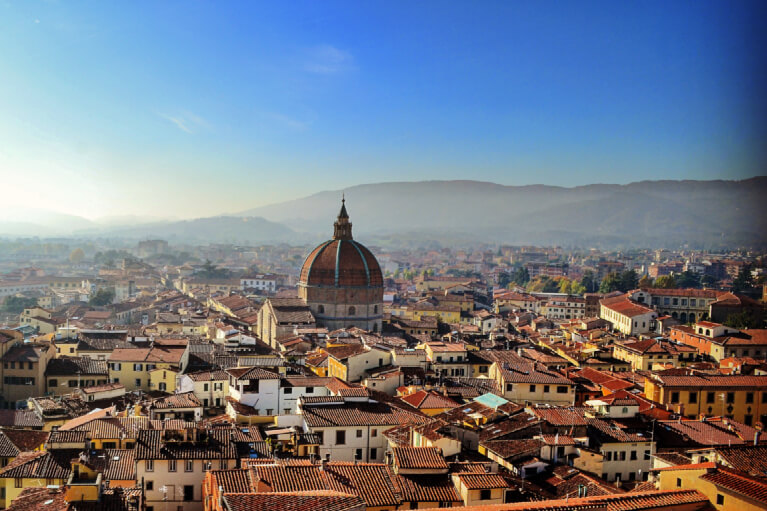
Pistoia
Piazza del Duomo is the heart of the city and the seat of the most important monuments: Palazzo Pretorio, the Baptistery and the Cathedral of San Zeno. The Pretorio Palace was the seat of the city court and preserved frescoes and secular history of Pistoia; The Baptistery of St. John in the Court is an octagonal plant in white marble Carrara and in green marble of Prato; The Cathedral of San Zeno is a wonder of Romanesque art, with architectural and pictorial overlays of successive periods. Inside there is the silver altar of San Jacopo realized between 1287 and 1456. The Civic Museum, which represents the entire artistic history of the city.
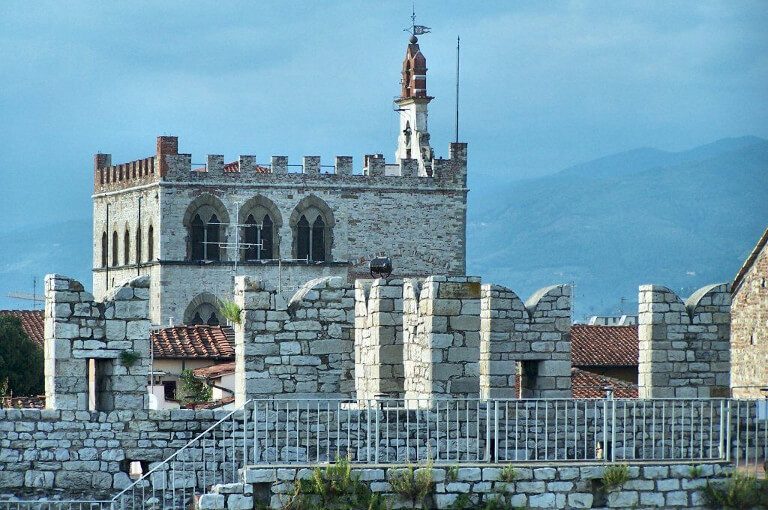
Prato
The Duomo di Prato is dedicated to Santo Stefano, built in Romanesque style in the XII-XIII centuries and enlarged in the 14th century with the addition of the gothic cruise. The Duomo Opera Museum preserves important works and is located in the Medieval Bishop’s Palace near the Duomo. Piazza del Comune with a copy of the Fountain of Bacchino, by Fernando Tacca, the original is in the hall of the Municipal Palace. The square overlooks the Palazzo Pretorio of the sec. XIII-XIV, the Municipal Gallery is home to it. Emperor’s Castle, an impressive square-shaped building erected by Frederick II between 1237 and 1248. The Fabric Museum, housed in the restored environments of the former Campolmi cemetary, is located in the medieval walled city. The Museum of Contemporary Art Luigi Pecci, located in the south-east of the city.
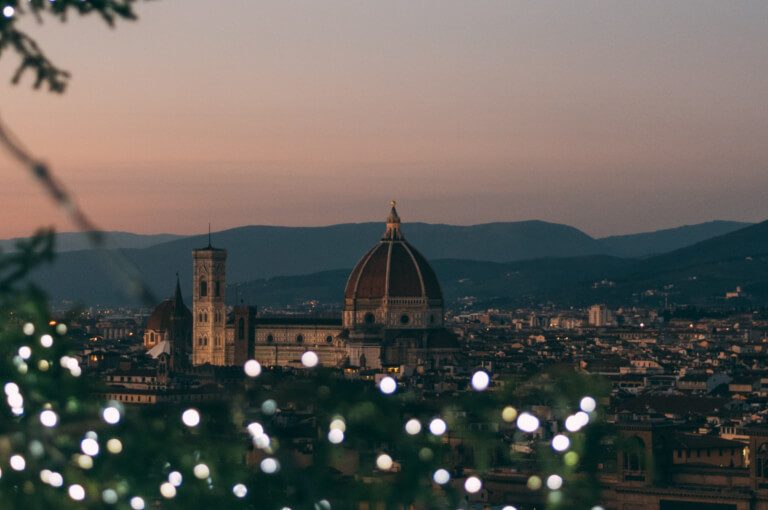
Florence
Firenze boasts a magnificent art tradition, that bears testimony of its proud history. Artists such as Cimabue and Giotto, the fathers of the Italian Renaissance; Arnolfo and Pisano masters of sculpture and architecture during the late Medieval period; Brunelleschi, Donatello and Masaccio who further developed the Renaissance, Ghiberti, Della Robbia, Filippo Lippi and L’Angelico, Botticelli and Paolo Uccello, Leonardo da Vinci and Michelangelo all lived in Florence.
Their works of art – together with those of numerous other artists – can be found in the city’s multitudinous museums: the Uffizi (www.uffizi.com) , the most visited art gallery in the world; the Galleria Palatina housed inside Palazzo Pitti, hosts a vast collection of Renaissance Art; the Bargello with sculptures from the Renaissance; the Museum of San Marco with the works of Angelico; l’Academia (housing the famous Michelangelo’s David), the Medici Chapels, the Casa Buonarroti, which houses sculptures by Michelangelo; the Museum Bardini, the Stibbert Museum, the Romano and Corsini Museums, the Modern Art Museum, the Museum of the Cathedral (Duomo), the Silver Museum and the Opificio delle Pietre Dure (Museum of artworks made with colourful semi-precious stone).
Important monuments are located in the city all bearing testimony to the various stages in the development of the Florentine artistic tradition. The Battistero with its mosaics; the Duomo with its sculptures, the medieval churches with their colourful frescos each narrating various biblical story, the various Palaces – Palazzo Vecchio, Palazzo Pitti, Palazzo Medici, Palazzo Riccardi, Palazzo Davanzati, the monasteries and the Certosa. The Archeological Museum has a vast collection documenting the history of the Etruscans.
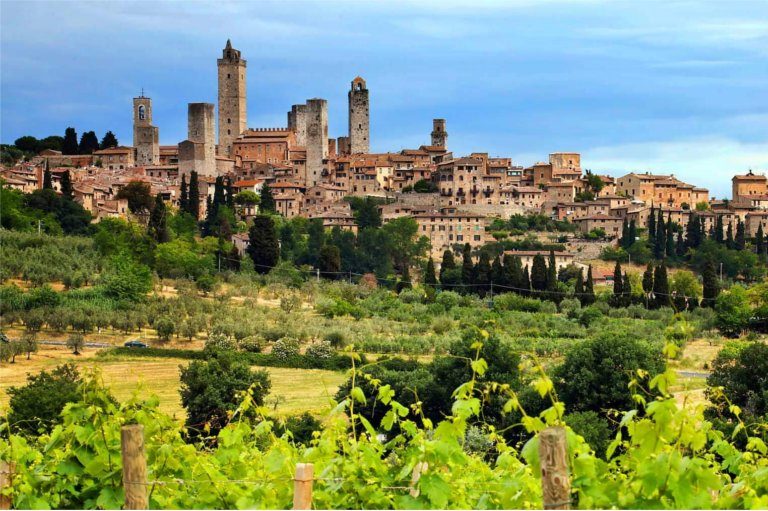
San Gimignano
San Gimignano is without doubt one of the most famous medieval citadels in Tuscany. As a result of its medieval architecture and its historical centre (“centro storico”), the town has been declared a UNESCO World Heirtage Site. San Gimignano, despite the renovations carried out in the 18th and 19th century has managed to retain architecture dating back to the second and third century and is one of the best examples of urban design dating back to the period of the medieval communes in Europe. San Gimignano is particularly famous for its sixteen medieval towers that still line its outskirts, which have given the citadel the nickname the “Manhattan of the Middle Ages”. Not to be missed in this town is the Museum of Torture.
Request information
Contact us to learn more
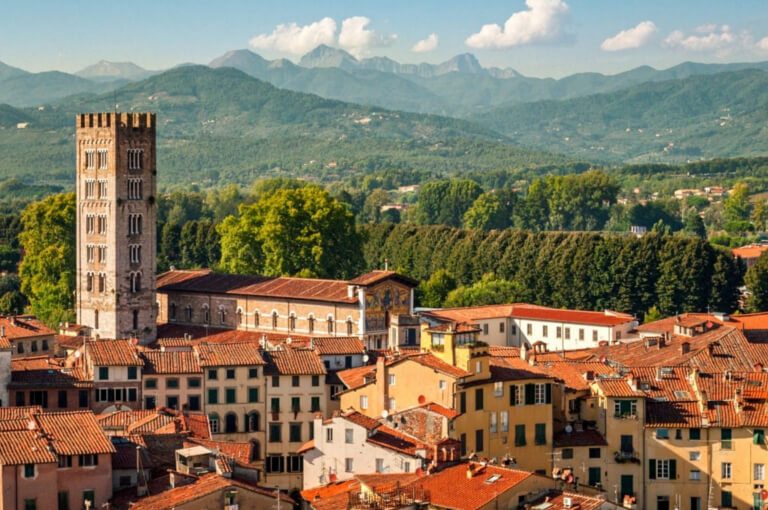
Lucca
For those wishing to visit this city, we strongly recommend a walk round the ancient walls (on foot or by bicycle rented from one of the various points along the walls) or climb up Torre Guinigi or the higher Torre delle Ore (the Clock Tower). From these vantage points one can admire splendid panoramas of the roofs of the Tuscan city that allows one to appreciate the beauty and harmony of the urban design of this city as imagined by the Romans. Another must-see destination is the Piazza dell’ Anfiteatro, unique in its design. We also recommend a visit to the Church of Saint Michael, also known as del Furo, located in what was previously the centre of ancient Lucca.
The two main axes, Via Fillungo and Via San Paolino are today much sought after shopping centres. Another destination is the Duomo of Lucca, the Churches of San Michele and San Frediano and the National Museum of Villa Mansi. Lucca is a welcoming city, tranquil with excellent restaurants surrounded by pristine countryside.
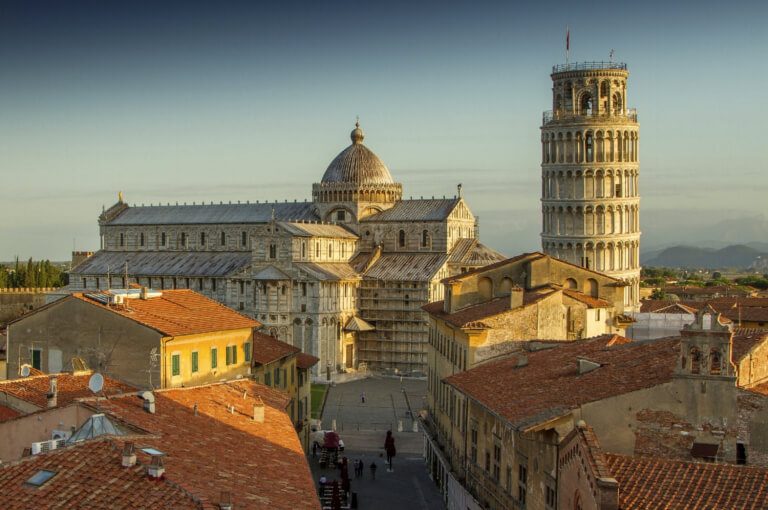
Pisa
Pisa, the city of Galileo Galilei prides itself of a history which spans millennia that reached its peak , during the period of the maritime republic. It is well known for its leaning tower, an extraordinary monument, that graces the “Quadrilogia” in the Piazza del Duomo, the Leaning Tower, the Cathedral (Duomo) of Santa Maria Assunta, St. John’s Baptistry and the Camposanto Monumentale. The area was declared a World Heritage Site by UNESCO in 1987 and rechristened by Gabrielle D’Annunzio “The Square of Miracles”. “Errors are necessary, useful as bread and sometimes even beautiful as for example the Tower of Pisa”. One can admire the Piazza dei Cavalieri (the Knights’ Square) with its clock tower and the famous Torre della Fame, the Palazzo della Carovana and the Church of St. Stephen of the Knights.
A visit to the old quarters at Borgo Stretto and a walk through Lungarni in a city which is spectacular during the day, beautiful at sunset and alive in the evening. All this combines to complete an amazing picture rich in its vivacity and history. One cannot miss the “Luminara di San Ranieri” for the unique and picturesque feast which takes place in Pisa the evening of the 16th of June of each year, on the eve of San Ranieri, the patron saint of Pisa.
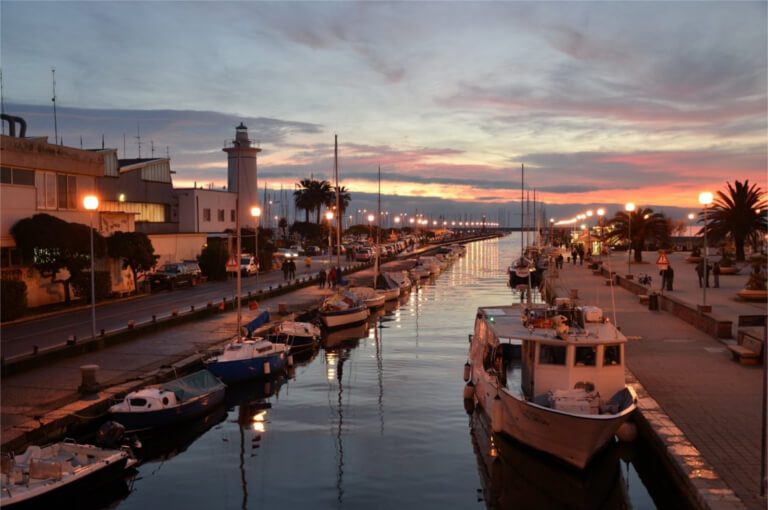
Viareggio
Viareggio is known, for being a seaside resort and for its Carnival which dates back to 1873, with the parade of the spectacular papier mache floats that travel along the seaside promenade. Viareggio is a location full of culture that one can easily admire. The Liberty style buildings along the promenade. The promenade is a main attraction of Viareggio: a long 3 km avenue that borders the sea with notable attractions such as the Bagno Balena to the Cafe Margherita, a popular haunt of Giacomo Puccini.
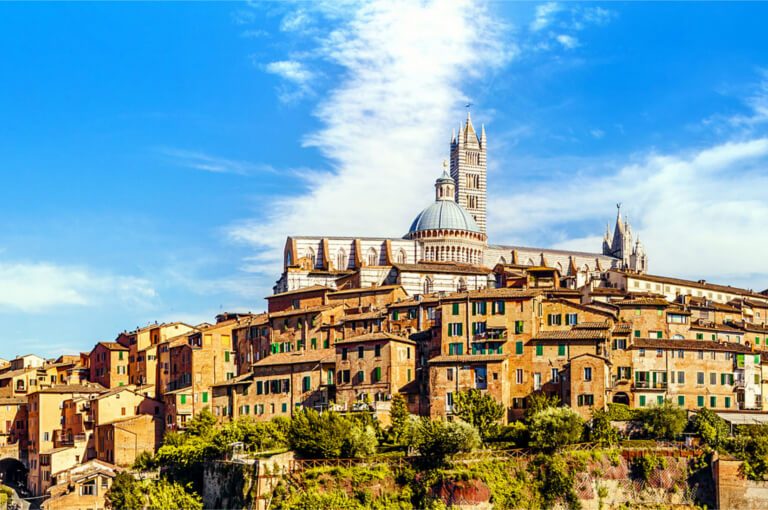
Siena
Known around the world for the much celebrated Palio, a horserace where jockeys ride bareback which takes place twice a year on the 2nd of July and the 16th of August. In the core of the city one finds the Piazza del Campo, where the race takes place and which is dominated by the town hall and the Torre del Mangia from where one can enjoy splendid views of the city. The historical centre is typical of Medieval design. It was declared a World Heritage Site in 1995.
